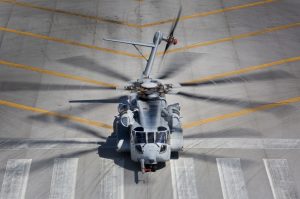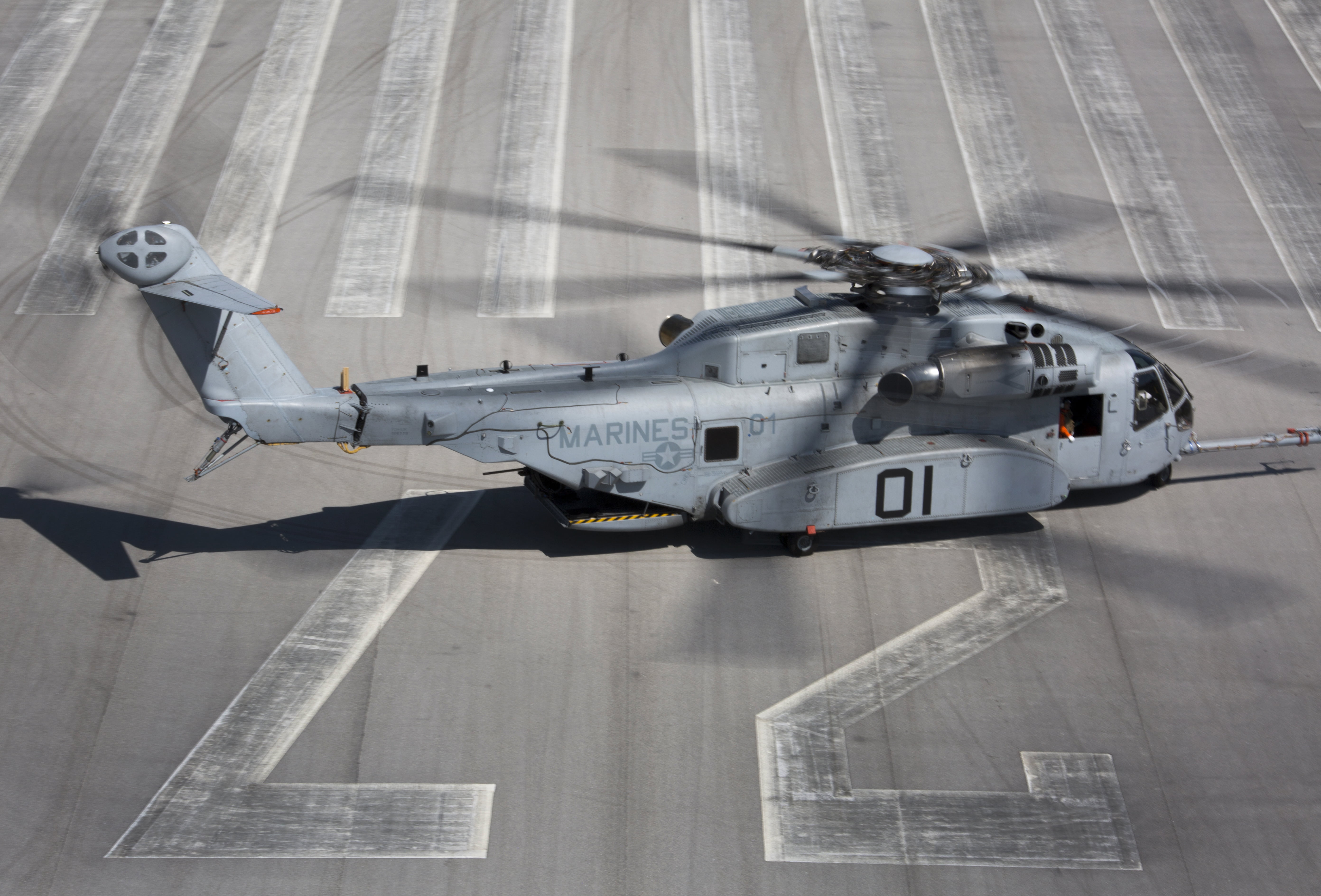2018-02-22 By Robbin Laird
Without the composites revolution, it would be difficult to image an Osprey tiltrotor aircraft.
Equally, without the composites revolution it would be difficult to envisage the successor to the CH-53E being able to lift three times more than its predecessor.
The lift is a function of the engine and the new gearbox, but without the strength and performance capabilities provided by modern composites it would be difficult to imagine building the CH-53K.
During a visit to the Connecticut plant of Sikorsky, I had a chance to discuss the building of the K Blades within the Blade facility at the plant with Stephen Pawlowicz, General Manager, Blades Product Center.
Earlier, during a visit to the Boeing Philadelphia plant, Murielle Delaporte and I saw how important composites were to the functioning of the Osprey. It is clear as well that composites are a key enabling technology for the build and sustainment of the K as well.
Put in other words, a key manufacturing revolution has been necessary to provide the USMC with its core lift and assault aircraft.
The plant is preparing for the ramp up in production of the K blades, both main rotor and tail rotor blades, and because of the enhanced size of the blades compared to the E, modifications are being made to produce the new blades in the plant.
And because the K is an all composite blade compared to the legacy aircraft, large autoclave ovens are needed to make the blades as well.
Currently, there are two large 55 foot autoclaves on site to handle the blades but a second will be built as the ramp up accelerates.
In the facility, there is a ramp up as well of repairing E blades.
The E blade is built around a titanium core or spar.
 The CH-53K King Stallion lands after a test flight in West Palm Beach, Fla. on March 22, 2017. Lockheed Martin announced the CH-53K King Stallion passed its Defense Acquisition Board assessment that approved for the aircraft to begin low-rate initial production on April 4, 2017. The CH-53K will be considered the most powerful helicopter in the Department of Defense and is scheduled to completely replace the CH-53E Super Stallion by 2030.
The CH-53K King Stallion lands after a test flight in West Palm Beach, Fla. on March 22, 2017. Lockheed Martin announced the CH-53K King Stallion passed its Defense Acquisition Board assessment that approved for the aircraft to begin low-rate initial production on April 4, 2017. The CH-53K will be considered the most powerful helicopter in the Department of Defense and is scheduled to completely replace the CH-53E Super Stallion by 2030.
(U.S. Marine Corps photo by Lance Cpl. Molly Hampton)
According to Pawlowicz, the blades can be stripped down to the core and the outside of the blade can be redone 3 or 4 times during their lifecycle.
And the plant is doing such repairs at an increasing rate to meet demand from the USMC.
The K blade is all-composite and will not be repaired in such a manner.
It will be necessary to shape a way ahead with the repair of an all-composite blade to determine the optimal regime to sustain the maximum life cycle performance of the new composite blades.
Sikorsky will invest in new facilities to support the K ramp up to the tune of $60 million over the next few years, including the aforementioned autoclave facility.
And new workers are being added as the ramp up begins, and as the repairs to legacy aircraft, like the CH-53E and the Blackhawk continue to provide a strong demand for blade repairs.
NAVAIR works with Sikorsky on a PBL with regard to the Seahawks which is an important input for Sikorsky to plan for blade repairs for the aircraft; in the case of the US Army, repairs are provided by annual funding cycles and their surges and valleys to the demand signal which makes it more difficult for Sikorsky to plan out the blade repair function.
It is a function of how funding is generated for the Army and then parceled out to the contractor.
Of course, the Navy has a much smaller fleet to manage compared to the Army’s more than 2,000 Blackhawks.
The management of a larger fleet presents challenges of its own for certain.
The facility is a state of the art facility and will enable the ramp up of the K to unfold.
The aircraft has 11 blades –7 main rotor blades and 4 tail rotor blades.
For the workers at Sikorsky, it is a welcome sight to welcome the K.
The last E was built in the mid-1990s but since then the repairs such as the rebuild of the blades have kept the workforce in the heavy lift operation for the USMC.
With the coming of the K, and its future support requirements, the workers can look forward to a steady work flow going forward.
This is good for the USMC and it is good for industry.


